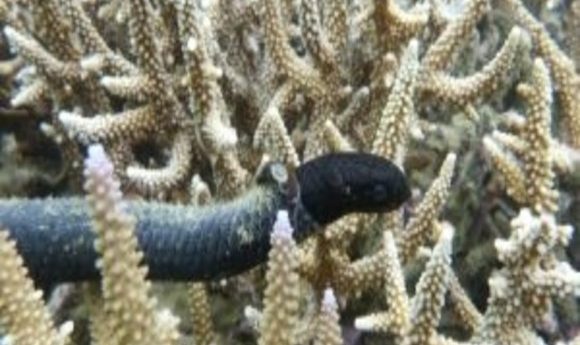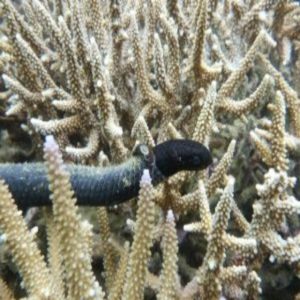The bright side of dark snakes

Just like peppered moths during the industrial revolution, sea snakes in polluted areas have evolved dark skin, which surprisingly increases their ability to excrete trace-elements from their bodies.

A black turtle-headed snake shedding its skin.
Credit: Claire Goiran, University of New Caledonia
The industrial revolution in Great Britain in the 19th century marked a biological milestone. In a classic example of natural selection, peppered moths that were originally light in color evolved into a darker color to match the more darkly colored trees in their polluted environment. Now, industrial melanism has struck again. Turtle-headed sea snakes in polluted areas have evolved more melanin to facilitate the removal of trace-elements, according to a report in Current Biology.
Richard Shine from the University of Sydney has been studying turtle-headed seasnakes for more than 20 years. Most of these snakes show light and dark bands, but he noticed that in the industrially polluted New Caledonia region, most of the seasnakes were entirely black.
Curious about the change in skin color, Claire Goiran, a marine biologist from the University of New Caledonia and first author of the study, turned to the literature and came across a paper showing that melanin bound trace elements and aided their excretion in black pigeons in polluted European cities. She wondered if the seasnakes used a similar defense mechanism.
“She collected some shed skins from snakes, analyzed them, and sure enough, they were absolutely full of trace-elements. And black skin had higher concentrations of the trace-elements than the pale skin,” said Shine.
In a previous study, Shine discovered that black seasnakes shed their skin almost twice as often as their light-colored counterparts, allowing them to abandon algae that impedes their movement. This extra shedding, combined with the high concentrations of trace-elements bound to their dark skin, helps the seasnakes survive in a toxic environment.
“The abundance of sea snakes is declining all over the world, all across coral reef systems,” said Shine. It is impressive that animals adapt rapidly to the challenges in their ecosystem, but there are limits to their tolerance, he cautioned.
“I think this is a good opportunity for us all to think about the negative impacts we are having on the environment and the great lengths we may be forcing animals to go to so that they will be able to survive,” said David Steen, an ecologist at Auburn University, Alabama who was not involved in the study.